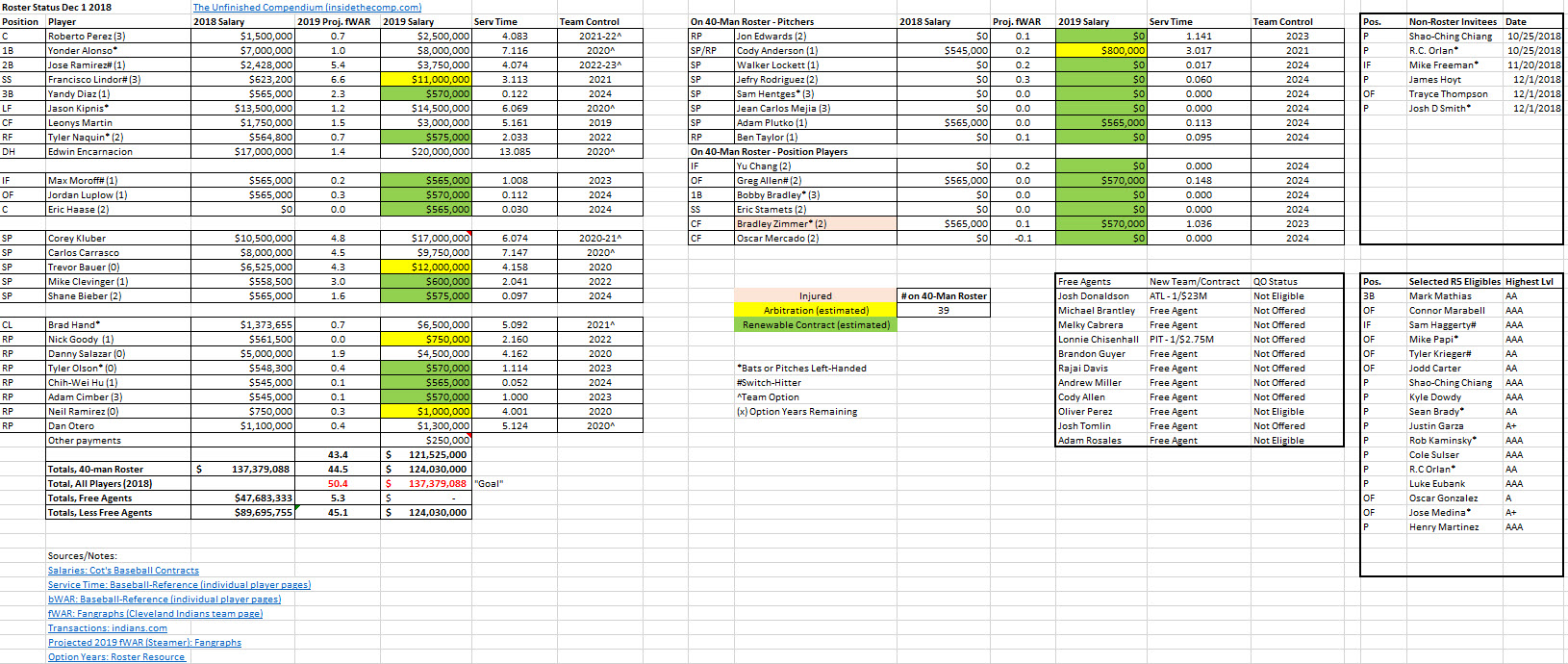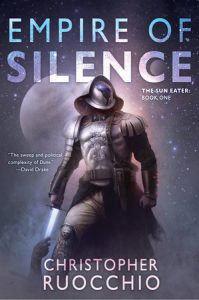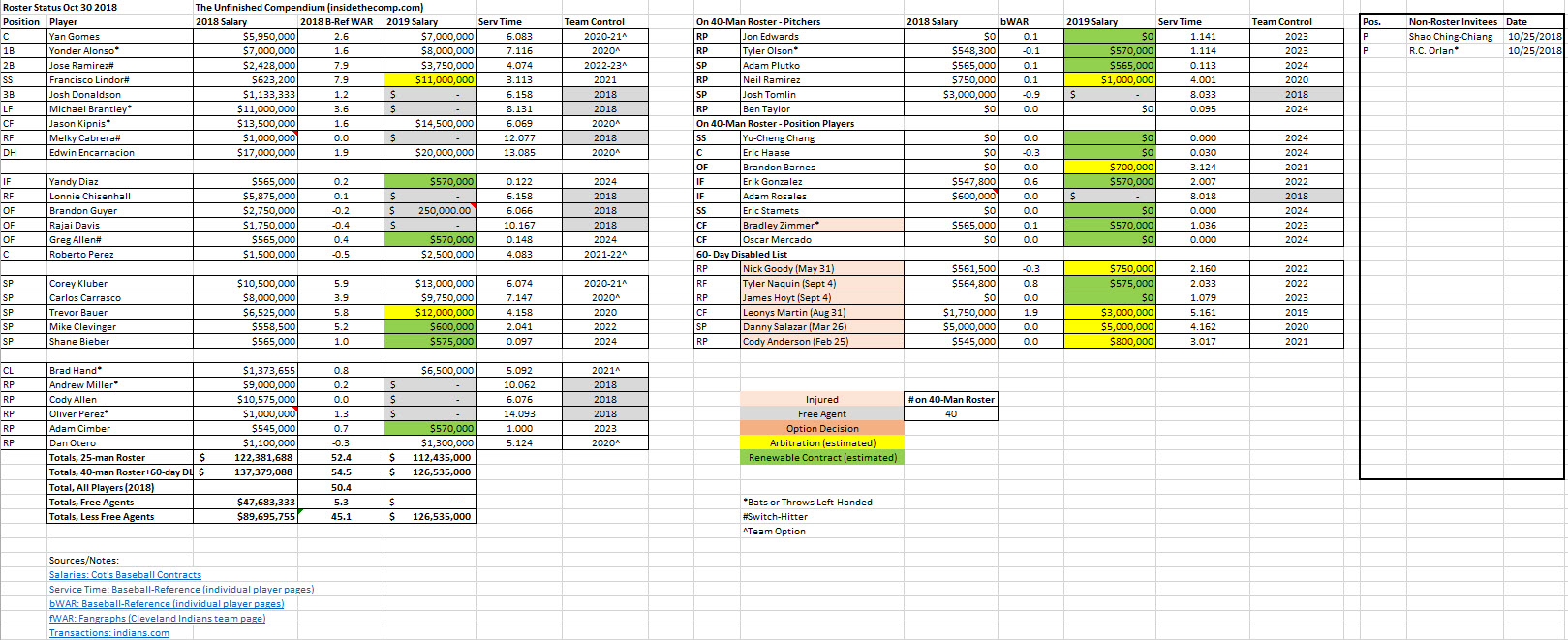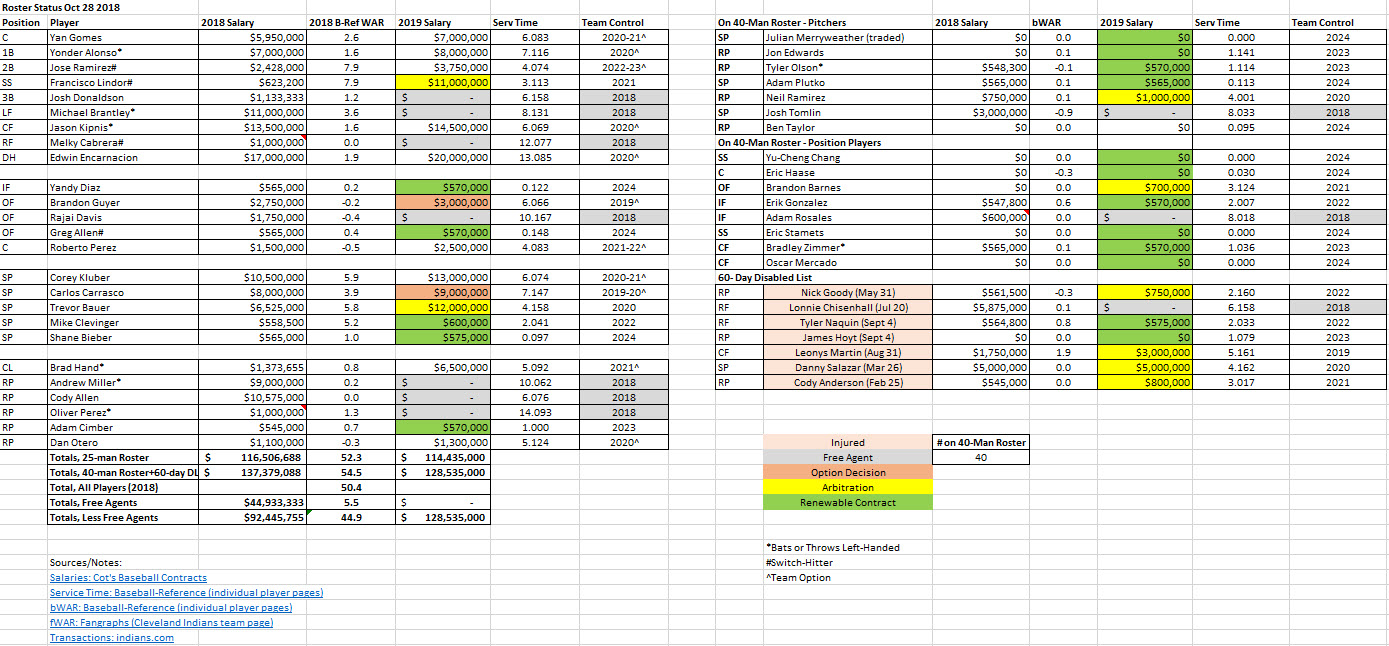First, the basic facts of the contract, along with the relevant quote from Chris Antonetti:
Source: Carlos Carrasco, Indians agree to extension through ’22 (indians.com)
“What this does,” team president Chris Antonetti said, “is provide us additional continuity in the rotation beyond 2020. We effectively left this year [2019] alone, exercised the option for 2020 and added two new years beyond that. It’s a continued investment by ownership in our team and the desire to remain a very competitive team moving forward.”
As noted by Chris Antonetti, this deal does not affect the 2019 or 2020 payroll, other than by making the 2020 salary guaranteed (before the extension, that year was a team option). What it does do is to make some of the trade options the team was contemplating more palatable. To be specific, if the Indians had traded Corey Kluber before the Carrasco extension, their 2021 rotation looked rather pedestrian, as both Carrasco and Trevor Bauer would have been free agents following the 2020 season. Now, with Carrasco locked up through at least 2022, that means they can keep everyone in the past year’s rotation except for Bauer through 2021. Given that the Indians boast one of the top 2-3 rotations in baseball, with starting pitching fetching such a premium on the free agent market, that’s a very big deal for a mid-market team.
And speaking of the free agent market, the AAVs (Average Annual Value) of the Carrasco extension ($11.6M if you include the option year), is less than half of what Patrick Corbin just got from the Washington Nationals(6/$140M, $23.3M AAV). And lest you think that Corbin is a better pitcher than Carrasco, a quick gander at both historical statistics as well as 2019 projections will quickly disabuse you of that notion.

The only thing Corbin has on Carrasco is age (29 vs. 32), but even that comes with a caveat, as Carrasco has only thrown 149 more innings than Corbin over the course of their careers, which is essentially three-quarters of a normal season for a starter. So if you subscribe to the notion that it’s the miles, not the years that determines the life left in an arm, Carrasco is only a year older than Corbin.
So how were the Indians able to retain Carrasco at such below-market rates? All the years of this extension will be at post-6-years service time (a player can become a free agent after 6 years of service time assuming he’s not already under contract). One clue can be found in the indians.com article referenced above:
Carrasco, who signed his original extension after a health scare that involved non-invasive heart surgery in 2014, is the longest-tenured member of the Indians.
The Indians extended Carrasco after his breakout 2014 season, taking a chance that he’d build on those 14 fantastic starts, but also taking a chance on him remaining healthy. Beyond the heart surgery, Carrasco was just a couple of years clear of Tommy John surgery. And all this came after several years of the team remaining patient with him while he bounced back and forth from the majors to the minors. Carrasco made his major-league debut back in 2009, and between Tommy John surgery and his struggles on the mount, he didn’t blossom into the pitcher we know him as until the second half of 2014. So I think Carrasco’s decision to take a hometown discount stems from a long and trusting relationship with the team. It’s not something you often see in the cutthroat world of professional sports, where players and teams often default to making decisions on financial impact alone, but sometimes the stars align with the result being this contract extension. Carrasco is obviously content with living in Cleveland, he’s content with trading a much-lower earning potential for stability, and the team is content with trading the risk of a long-term deal to a 32-year-old pitcher for a well-below market AAV. “
“I feel great to be part of the Cleveland Indians,” Carrasco said. “I just want to finish my career with them. This is something special for me and my family.”
Carrasco, Tribe agree to extension through ’22
This contract paves the way for the Indians to trade either Corey Kluber or Trevor Bauer this week at the Winter Meetings. Because one of the objectives of this type of trade will be to clear payroll for free agent signings, I think they’ll want to pull the trigger sooner rather than later, and with several of the top free agent starters (Corbin, Eovaldi) already signing, the clubs that lost out on those free agents may be starting to view a trade more favorably now that the free agent market isn’t as enticing any more. The Indians would use any payroll savings on presumably outfield help, and with Michael Brantley still available and willing to playing some first base, I think there’s a decent possibility that team would be able to re-sign him if the right type of trade happens.
With that in mind, ponder this bit of news from SNY
“You can get Bauer cheap,” the exec said. “The catch is that you have to take (Jason) Kipnis’ money too. The Yankees might be the only team who would do that — if they’re not really in on (Manny) Machado or (Bryce) Harper.”
Bauer has the highest upside for 2019 of anyone in the rotation, but he’s also the only pitcher in that rotation who isn’t cost-controlled for 2019, as he and the team are in the arbitration process right now. And barring something completely unexpected, he and team will be in the same position next year, with the potential him making close to $20M in his final year of arbitration. Given that the value of starting pitchers is going up compared to many other positions, I think it’s understandable that the Indians would prefer to trade Bauer over Kluber just on that factor alone. And now that Carrasco is locked up, Bauer is the closest starter to free agency. Should the Indians include Jason Kipnis along with Bauer in a trade, that aren’t going to get nearly the type of return in terms of a talent that they’d get would they trade Bauer alone. But that would give them much more payroll flexibility to make deals for free agents or even other trades, assuming of course that the 2019 payroll will be at the same level as it was in 2018.
This type of trade, not to mention the type of team involved, in which the team includes a valuable player in order to dump the salary of a less productive player (Kipnis is still a player you’d take in your lineup, but if he’s playing left field, is he really going to be that valuable?) carries with it the risk of alienating the fanbase, both from those who views spending and those who view accumulated talent as measures of a team’s willingness to compete. The failure to follow up a Bauer/Kipnis trade with a meaningful acquisition, be it in free agent or in a trade for an established star, would in my mind negate whatever strategic payroll gains the team makes from the original trade. But if, for example, the Indians announce the re-signing of Michael Brantley soon afterwards, then pull off a deal for 3-win RF later that week, then later on sign a couple relievers, I think most fans would appreciate the entirety of the offseason over what in isolation would seem to be another step back (in addition to the Yan Gomes trade).
The Indians will have a very fine and crooked line to walk this week, but the Carrasco extension widens that path, perhaps even straightens it as well. Here’s hoping for big, and more importantly, good news to follow soon.








